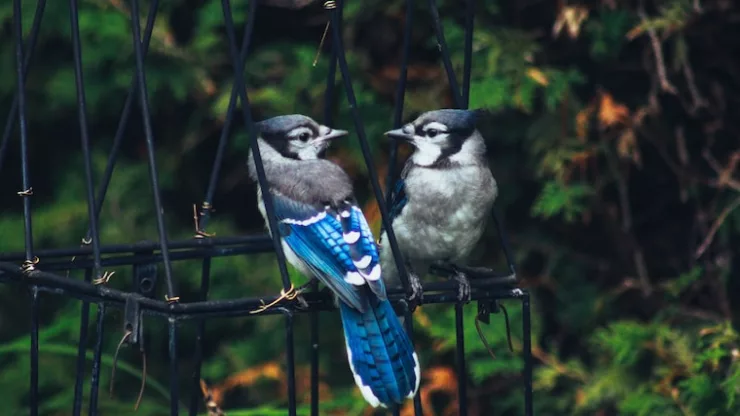Urban environments are often associated with concrete and steel, but they are also home to an incredible diversity of bird species.
From common pigeons to rare hawks, urban birds are a fascinating subject of study and observation for birdwatchers and scientists alike.
In this article, we will explore the importance of urban birds, the challenges they face, the diversity of species found in urban environments, the benefits of urban birdwatching, and tips for observing these feathered city dwellers.
Jump to Section
Introduction
Birds have long been a source of fascination and inspiration for humans.
They are a vital part of our natural ecosystems, and their presence in urban environments is a testament to their adaptability and resilience.
In recent years, the study of urban birds has gained increasing attention, as researchers seek to understand how these birds navigate the challenges of urban living.
Why Urban Birds Matter
Urban birds play a critical role in maintaining a healthy ecosystem in cities.
They help control insect populations, pollinate plants, and disperse seeds.
Additionally, birdwatching is a popular hobby that provides economic benefits to local communities and encourages conservation efforts.
Understanding Urban Environments
Characteristics of Urban Environments
Urban environments are characterized by high levels of human activity, noise, and pollution.
These factors can have a significant impact on bird populations, affecting their behavior, habitat selection, and reproductive success.
Additionally, urban environments often lack natural food sources and nesting sites, which can make it challenging for birds to survive.
Challenges for Urban Birds
Urban birds face a variety of challenges in their daily lives. These challenges include:
- Habitat loss and fragmentation
- Exposure to pollutants and toxins
- Competition with invasive species
- Predation by domestic cats and dogs
- Collisions with buildings and vehicles
Despite these challenges, many bird species have adapted to life in urban environments and are thriving.
Avian Diversity in Urban Environments
Common Urban Birds
Urban environments are home to many bird species that are commonly found in cities around the world. These species include:
| Bird Species | Characteristics |
|---|---|
| Pigeons | Common and adaptable |
| Sparrows | Small and social |
| Starlings | Loud and gregarious |
| Crows | Intelligent and opportunistic |
Uncommon Urban Birds
In addition to the common species, urban environments also support a variety of less common bird species. These species include:
- Blue Jays
- Cardinals
- Mockingbirds
- Woodpeckers
Rare Urban Birds
While less common, some bird species are rare but still occasionally spotted in urban environments. These include:
- Peregrine Falcons
- Bald Eagles
- Snowy Owls
- Sandhill Cranes
Benefits of Urban Birdwatching
Mental Health Benefits
Birdwatching has been shown to have numerous mental health benefits, including reducing stress and anxiety, improving mood, and increasing feelings of connectedness to nature.
Educational Benefits
Urban birdwatching provides an excellent opportunity for education and learning.
Observing and identifying different bird species can help children and adults alike develop an appreciation for nature and an understanding of the role birds play in our ecosystems.
Conservation Benefits
Birdwatching can also promote conservation efforts by raising awareness of the threats facing bird populations.
By observing and documenting bird species in urban environments, birdwatchers can contribute to citizen science projects that help scientists better understand bird behavior and population dynamics.
Tips for Urban Birdwatching
Finding the Best Locations
To observe urban birds, it is essential to know where to look. The best locations for birdwatching in urban environments include parks, gardens, and green spaces.
Additionally, observing birds during their active times, such as early morning or late afternoon, can increase the chances of spotting different species.
Identifying Birds
Identifying bird species can be challenging, especially for beginners. However, with practice and the right tools, anyone can become an expert birdwatcher.
Binoculars, a field guide, and a notebook for recording observations are all essential tools for identifying bird species.
| Bird Identification Tips |
|---|
| Observe bird size and shape |
| Look for distinctive color patterns |
| Listen for bird calls and songs |
| Note habitat and behavior |
Attracting Birds to Your Yard
If you want to observe birds in your backyard, there are several things you can do to attract them.
Providing food, water, and nesting sites are all key factors in attracting birds.
Additionally, planting native plants and avoiding the use of pesticides can create a bird-friendly environment.
Appreciating Urban Birds
Urban birds are a fascinating and valuable part of our natural world.
By observing and appreciating these feathered city dwellers, we can gain a better understanding of their behavior, ecology, and importance to our ecosystems.
FAQ
What is the most common urban bird?
Pigeons are the most common bird species found in urban environments around the world.
What should I bring when birdwatching in urban environments?
Essential tools for birdwatching in urban environments include binoculars, a field guide, and a notebook for recording observations.
How can I attract birds to my backyard?
Providing food, water, and nesting sites are all key factors in attracting birds to your backyard.
Additionally, planting native plants and avoiding the use of pesticides can create a bird-friendly environment.
I’m a nature enthusiast and creator of Metro Wilds and have spent years exploring the great outdoors.
With a passion for environmental conservation and sustainability, I have dedicated my career to writing about the beauty and wonders of nature, as well as the threats facing our planet.
Contact me at [email protected] for assistance.





